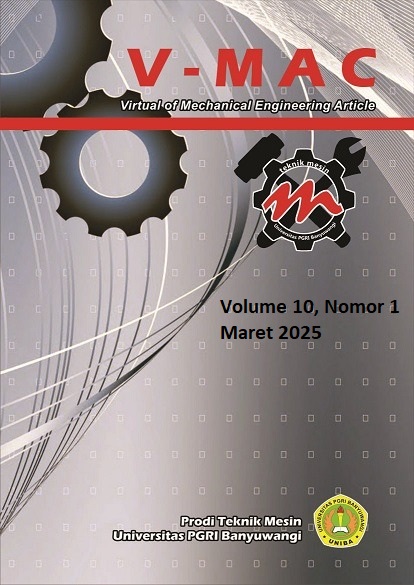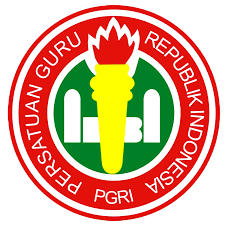Analisis Pengaruh Variasi Kecepatan Motor Induksi dan Jumlah Mata Pisau terhadap Kinerja Mesin Pencacah Botol Plastik
DOI:
https://doi.org/10.36526/v-mac.v10i1.4229Abstract
The aim of this research is to determine the effect of variations in motor rotation speed and the number of blades on plastic bottle chopping machines, in order to help human work in recycling plastic bottles by finding the highest level of machine effectiveness, because along with technological developments in the field of mechanical engineering, humans think about how how to make a tool that can provide convenience, comfort, environmentally friendly, and so on. This research method creates a plastic bottle chopping machine that works by cutting plastic bottles into small pieces, using a flat type AISI 420 Stainless Steel knife, and as a driver a single phase AC electric motor with a maximum speed of 1420rpm. The results of this research are regarding the effectiveness of production results from plastic bottle chopping machines. This discussion and testing aims to obtain the following data: 2 blades (800rpm=96kg/day), (1100rpm=172.8kg/day), (1420rpm=192kg/day). For 4 blades (800rpm=134kg/day), (1100rpm= 211.2kg/day), (1420rpm=2429.6kg/day). And 6 blades (800rpm=153.6kg/day), (1100rpm=230kg/day), (1420rpm=288kg/day). The results of this data and machine will certainly really help operators in increasing the effectiveness of plastic bottle chopping machines.
Keywords: Blades Chopping, Machine Electric Motor, Plastic Bottle
Downloads
Published
How to Cite
Issue
Section
License
uthors who publish with this journal agree to the following terms:
1. Copyright on any article is retained by the author(s).
2. The author grants the journal, the right of first publication with the work simultaneously licensed under a Creative Commons Attribution License that allows others to share the work with an acknowledgment of the work’s authorship and initial publication in this journal.
3. Authors are able to enter into separate, additional contractual arrangements for the non-exclusive distribution of the journal’s published version of the work (e.g., post it to an institutional repository or publish it in a book), with an acknowledgment of its initial publication in this journal.
4. Authors are permitted and encouraged to post their work online (e.g., in institutional repositories or on their website) prior to and during the submission process, as it can lead to productive exchanges, as well as earlier and greater citation of published work.
5. The article and any associated published material is distributed under the Commons Attribution 4.0 International License.





















